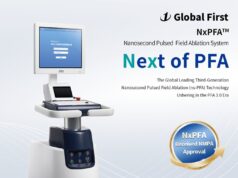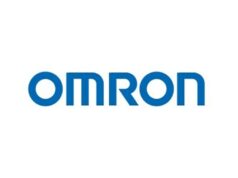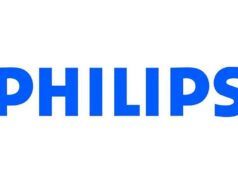
Historically, catheter ablation has been reserved for atrial fibrillation (AF) patients who have failed to respond to, or tolerate antiarrhythmic drug therapy, electrophysiologist Dhiraj Gupta (Liverpool Heart and Chest Hospital, Liverpool, UK) tells Cardiac Rhythm News. However, he explains, there are now a slew of randomised studies that have shown catheter ablation as a first line therapy may be superior to antiarrhythmic drugs.
“Increasingly,” Gupta says, “AF ablation is being utilised early on in the disease course, which is probably not a bad thing because we know that, in general for most conditions, the earlier you intervene, the better your results are going to be.” Despite the emerging evidence base for catheter ablation, in particular evidence advocating an early intervention strategy, only a handful of patients eligible for this treatment are referred for the treatment, Gupta believes. Gupta tells Cardiac Rhythm News that there is a need to highlight the existence of patients who may significantly benefit from an ablation procedure, and to educate healthcare professionals about the potential benefit of early intervention to decrease burden on health systems by reducing long-term costs.
Gupta refers to a recent paper published in Heart BMJ, that he was the senior author on; this involved a meta-analysis of all randomised studies that have compared catheter ablation versus antiarrhythmic drugs as the first line treatment for in treatment-naïve patients with paroxysmal atrial fibrillation. In particular, he highlights a trio of multicentre studies, namely, EARLY AF, STOP AF, and Cryo-FIRST that studied the use of Arctic Front (Medtronic) cryoballoon ablation compared with antiarrhythmic drug treatment. Results from EARLY AF, published in the New England Journal of Medicine (NEJM) found that cryoablation was superior in maintaining freedom from AF, atrial tachycardia and atrial flutter, with 11% of patients in the catheter ablation group versus 25% in the antiarrhythmic drug group suffering from symptomatic arrhythmia at 12 months. STOP AF, which were also published in NEJM, demonstrated a 75% success rate with ablation versus 45% with anti-arrhythmic drugs at 12 months. Similarly, Cryo-FIRST found that cryoablation is superior to antiarrhythmic drug therapy for the prevention of atrial arrhythmia recurrence in paroxysmal atrial fibrillation (PAF) patients who have not previously been treated with drug therapy.
“If the patient is either not tolerating antiarrhythmic drugs, or is still getting breakthrough atrial fibrillation in spite of drug therapy, then I would recommend catheter ablation very strongly,” says Gupta. “What recent trials have shown is that catheter ablation is an option worth discussing with the patient even if the patient is tolerating the antiarrhythmic drugs well and those drugs are effective. If the patient wants to come off those drugs, like many patients do, they might choose catheter ablation.” Often, he says, patient age is a determining factor as to treatment choice, with younger patients potentially benefiting more from an intervention in order to avoid the long-term use of antiarrhythmic drugs. “It is very much a case of putting the option in front of the patients, explaining to them what the evidence base is at the moment, but it is also important to be up front about the success rates and complications they could expect in your hands,” he adds.
Considering why a small proportion of eligible patients may be referred for ablation, Gupta reflects that there may be a multitude of factors driving this point. “Historically, there has been a lack of awareness about catheter ablation amongst some general cardiologists, and many general practitioners,” he claims. “Catheter ablation was not something that would come to the top of their minds when these physicians come across a patient with atrial fibrillation.” This should hopefully change following release of the latest guidelines for the management of AF from the UK’s National Institute for Health and Care Excellence (NICE), which recommend the use of radiofrequency point-by-point ablation in patients with symptomatic intermittent or persistent atrial fibrillation, for whom drug treatment has been unsuccessful, is unsuitable, or is not tolerated.
Further development of skills among electrophysiologists to effectively perform ablation will also potentially bring the treatment to a broader set of patients. “The electrophysiologist community need, on the one hand, to advance awareness and educate non-specialist physician colleagues that this is a treatment that can be curative, especially in the early stages,” says Gupta. “Equally, we also need to invest in resources to increase the numbers of trained operators and catheter laboratories that will be required to meet this increased demand.”
Given the growing evidence base, Gupta believes that the field of electrophysiology is on the cusp of a rapid expansion of catheter ablation. Reflecting on important messages for colleagues to take away from the recent clinical trials, he highlights the importance of early catheter ablation, and understanding the comparable success rates between the different ablation modalities. “With cryoballoon pulmonary vein isolation (PVI), there is a shorter learning curve, and a narrow window of efficacy, essentially about around 70‒75% of patients do very well,” he comments. Gupta describes radiofrequency ablation as a “much more versatile tool,” because it is possible to get excellent coverage of the pulmonary veins regardless of the patient’s anatomy. “However, what RF requires, is an investment on the part of the operator to learn that skill,” he explains. “The operators who have made this investment can expect to see success rates approaching 90%,” he adds, noting that this was a finding from the VISTAX trial, a multicentre study involving 340 patients with drug-refactory paroxysmal AF, published in EP Europace. Gupta explains that every patient enrolled in this trial underwent focal radiofrequency ablation with CARTO [Biosense Webster] using the CLOSE protocol aiming to enclose the veins with contiguous and optimised radiofrequency lesions. “With that we saw success rates were around 90%, a figure that has never been matched by any other technology,” he says. “This suggests that the ceiling with focal radiofrequency ablation is higher than with cryoballoon, with treatment failure expected in around one in 10 patients rather than one in four.”
This suggests that the ceiling with focal radiofrequency ablation is higher than with cryoballoon, with treatment failure expected in around one in 10 patients rather than one in five. For this reason, the NICE recommend use of focal radiofrequency as the modality of first choice for AF ablation.









